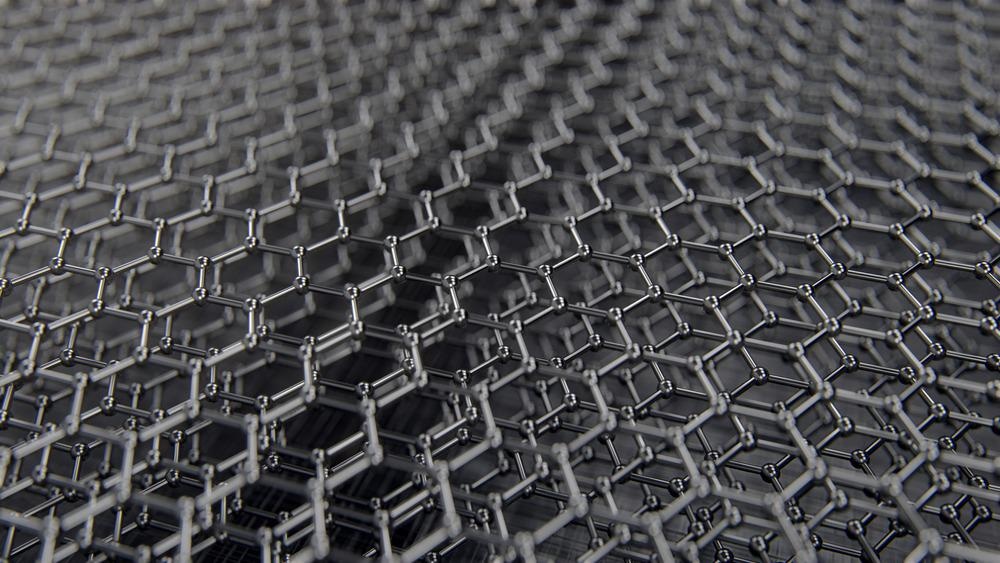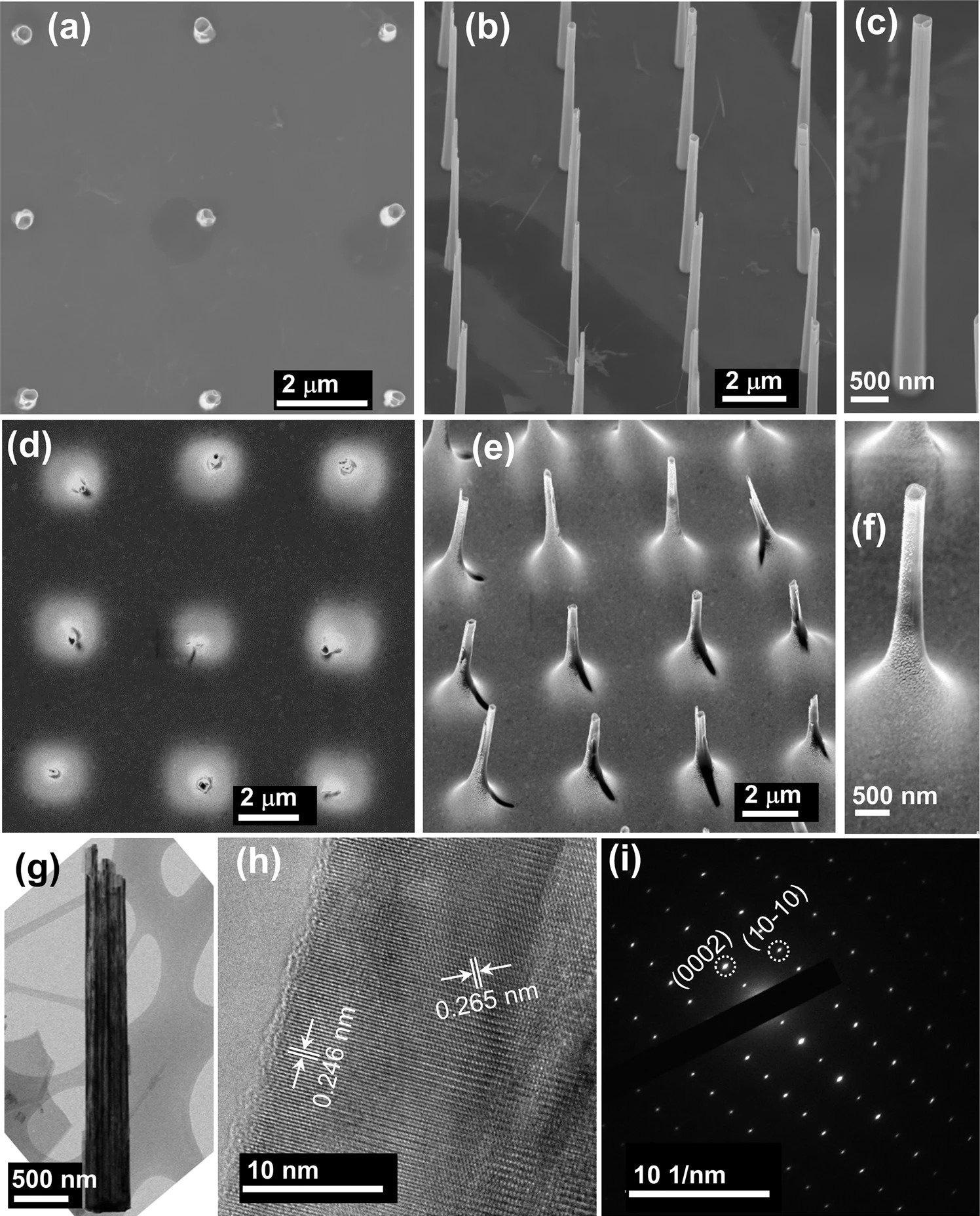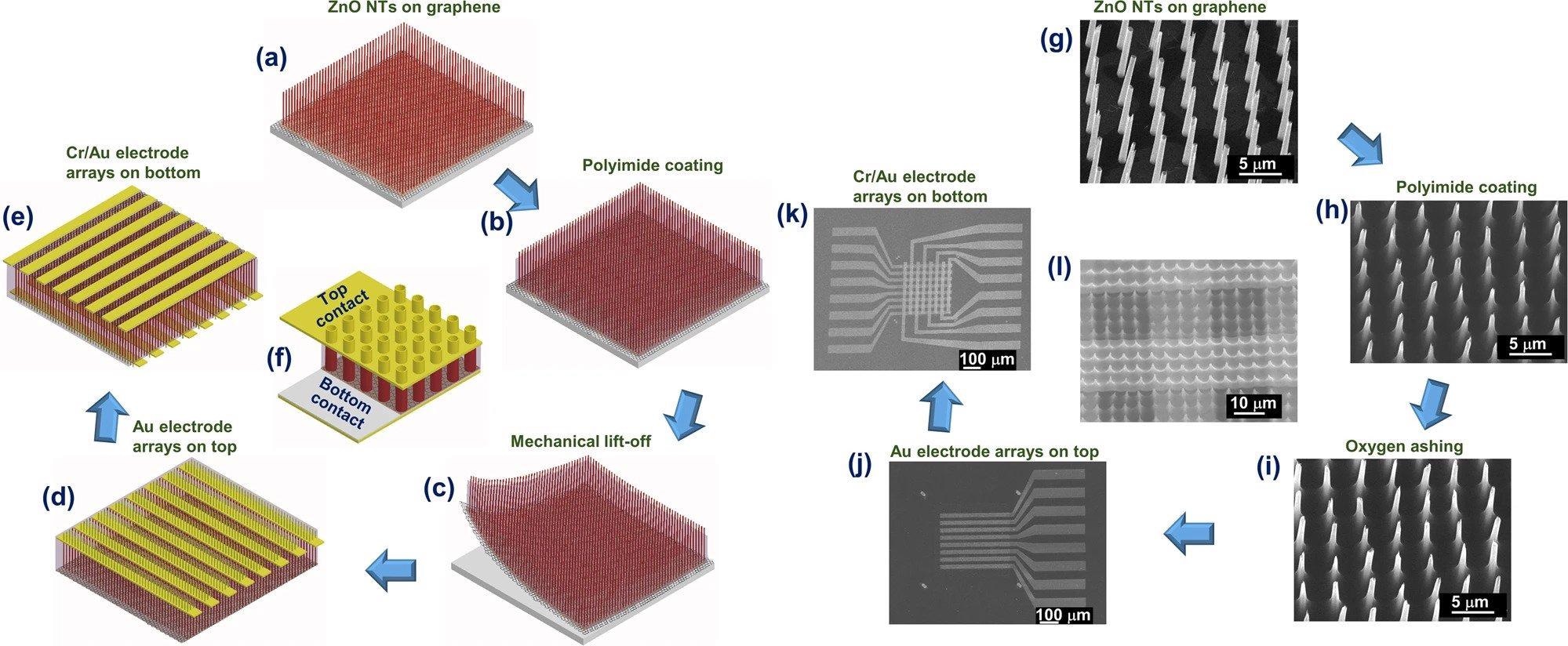In an article published in the journal NPG Asia Materials, the synthesis of separately controllable, high-density, upright zinc oxide nanotube pressure sensing frameworks was reported.

Study: Individually addressable and flexible pressure sensor matrixes with ZnO nanotube arrays on graphene. Image Credit: Dorxela/Shutterstock.com
Shaping the Future with 1D Piezoelectric Semiconducting Nanostructures
One-dimensional (1D) piezoelectric semiconducting nanomaterials such as nanotubes, nanowires, and nanorods have shown tremendous application potential in nanoscale electromechanical power harvesting, electronic goods, robotic systems, and medical services.
The one-dimensional nanotubes/nanowires may be built and organized vertically inside a small space to act as a force/pressure sensing framework with excellent spatial resolution resulting from highly sensitive force/pressure mapping.
One-dimensional zinc oxide (ZnO) nanostructures have garnered much interest. When combined with piezoelectric effects, electronics, and photonics, these nanostructures are frequently employed as sensory tools for artificial intelligence and healthcare applications.
A useful tactile sensory module for cutting-edge robotic systems and human-machine interactions necessitates the large-scale incorporation of pressure sensing matrices with excellent spatial resolution, great sensitivities, broad sensing bands, and quick response.

a Top-view and b 30° tilted-view SEM images of ZnO NT arrays on graphene. c SEM images of a single ZnO NT with 30° tilted views. d Top-view and e 30° tilted-view SEM images of ZnO NT-based pressure sensor arrays on graphene. f 30° tilted-view SEM images of a single ZnO NT-based pressure sensor. g TEM image of an individual ZnO NT collected after scratching the ZnO NTs on a Cu grid. h, i Corresponding HRTEM lattice image and SAED pattern, respectively. © Park, J., Ghosh, R. et al. (2022).
Pros and Cons of Different Types of Tactile Sensors
A wide range of stretchable and pliable tactile sensors having various pressure detecting methods, such as ones based on resistance, capacitance, triboelectric, and piezoelectric effects, have been extensively investigated.
Resistive tactile sensors' functional components include conducting nanoparticles in a polymeric framework. While these sensors have several benefits, like excellent sensitivity with regulated spatial resolution, uncomplicated gadget design, and inexpensive manufacturing, the applicability scope is limited due to existing limitations, such as large power usage and equipment temperature dependency.
The most popular tactile sensors are capacitive ones, which have exhibited small power usage, great flexibility, stable system performance across a broad pressure range, excellent sensitivities, and significant spatial resolution.
The primary disadvantages of using capacitive tactile sensing devices in high-res force/pressure tracking include bulky device configurations, inconsistency in sensor performance dependent on dielectric elastomers, complicated measuring techniques, and low spatial resolution.
Triboelectric tactile sensors have piqued the interest of scientists due to their self-powering and energy collection capabilities. The difference in triboelectric polarity of the two interacting components has been used to show good sensitivities for pressure sensing from various stresses.
Dynamic pressure detection has long been recognized as a difficult task for these triboelectric sensors. Piezoelectric tactile sensors are being researched extensively due to their advantageous performance characteristics like good sensitivities, quick response, and the capability to detect dynamic pressures.
Bringing Together Zinc Oxide and Graphene for Exceptional Tactile Sensors
Scientists have used various techniques to extract exceptional performance from zinc oxide-based piezoelectric tactile sensors, including the formation of composites and heterostructures, and the integration of photonics and piezotronics. Piezo-phototronic detectors have shown high spatial resolution, fast reaction times, as well as device flexibility.
The technically demanding production method continues to impede the incorporation of one-dimensional zinc oxide nanostructures on a pliable substrate as separately programmable and piezotronic sensing grids for high-res force/pressure tracking.
One critical strategy is to flip the one-dimensional nanostructures and build crossbar electrode grids on the opposing edges of the one-dimensional nanostructure matrices. Metallo-organic chemical vapor deposition (MOCVD) is a well-renowned process for creating good-quality, dimension- and position-controlled one-dimensional zinc oxide nanotube (NT) networks on graphene sheets.
The bottommost graphene layer regulates the dimensions and placements of zinc oxide nanotubes and allows for successful lift-off of free-standing zinc oxide nanotubes to produce optimal crossbar microscale electrodes.
These distinct one-dimensional nanotubes combined on flexible substrates are suitable foundations for flexible tactile gadgets in e-skin. Since graphene sheets have great mechanical tolerance for twisting and bending, they are utilized directly as a pliable conducting layer to improve contact robustness.

a–e Schematic illustration of the steps used to fabricate crossbar array electrodes. f Enlarged view of the addressable device AD20. g–k SEM images at different stages of AD20 fabrication. l SEM image of a complete, individually addressable device. SEM images in g–l, i, and l are tilted by 30°. © Park, J., Ghosh, R. et al. (2022).
Conclusions
This study used zinc oxide NT matrices on CVD graphene sheets to create separately controllable, high-density, position- and dimension-controlled, upright, and free-standing piezoelectric sensing frameworks. The separately controllable pixel grid was created by assembling the detectors' topmost and bottommost electrodes in a crossbar arrangement.
A set of experiments indicated the robustness and uniformity in the spatial mapping of force/pressure induced by the size of the pixels, the quantity of zinc oxide NTs in every pixel, and the lateral measurement of every zinc oxide NT. A Schottky diode-based tactile sensing device made of zinc oxide NTs on an elastic platform achieved a spatial resolution equal to 1058 dpi.
The team validated the free-standing sensory grids' superior flexibility and electric robustness for high-res tactile scanning. This study has the potential to pique the interest of many researchers interested in one-dimensional piezoelectric force/pressure sensory matrices, which have several uses in human-machine interfaces, smart skin, and nanoscale and microscale electromechanical systems.
Reference
Park, J., Ghosh, R. et al. (2022). Individually addressable and flexible pressure sensor matrixes with ZnO nanotube arrays on graphene. NPG Asia Materials, 14. Available at: https://www.nature.com/articles/s41427-022-00386-4
Disclaimer: The views expressed here are those of the author expressed in their private capacity and do not necessarily represent the views of AZoM.com Limited T/A AZoNetwork the owner and operator of this website. This disclaimer forms part of the Terms and conditions of use of this website.